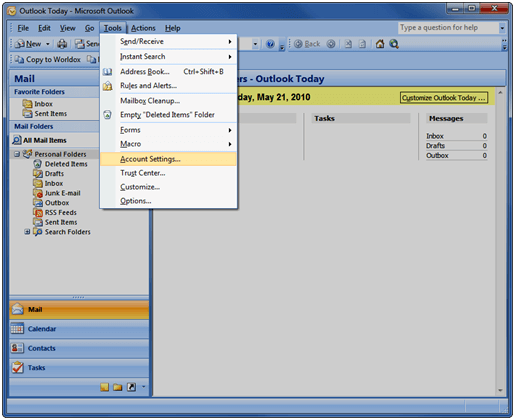Email accounts can sometimes be very confusing—IMAP, Exchange, SMTP, POP3. I mean I thought we were talking about email, not what we’re drinking. In this brief post, I’m going to break down the different types of email accounts, how they affect you, and how to tell what kind you have.
POP3
The first type of email account we’re going to talk about is POP3 (Post Office Protocol version 3). A pop account goes out to the mail server and brings the mail back to you. Sometimes copies of the mail can be left on the server and sometimes they are moved down so as to leave nothing on the server. Either can be achieved by simple check box settings.
You may want a POP3 account because you only want to use a single device for your email and have no need for synchronization between devices. This type of account is also convenient if you have limited storage space on your email server. However, there are drawbacks to using a POP3 account, such as having to constantly delete emails in order to free up space on the server.
SMTP
If POP retrieves your email then how do you send it? That is where SMTP (Simple Mail Transfer Protocol) comes in—it is outgoing mail only. Most internet providers block the standard port (25) for SMTP.
To use SMTP for sending emails, you typically need to configure your email client or application with the SMTP server settings provided by your email service or Internet service provider. This involves inputting the SMTP server address, your email address, and your password for authentication. Additionally, you may need to specify a port number and choose whether to use SSL/TLS for enhanced security.
The benefits of using SMTP are significant, particularly for businesses and individuals who rely on email communication. SMTP ensures that your outgoing emails reach their intended recipients reliably and efficiently. It also supports sending emails from any location and any device, as long as you have internet access.
IMAP
IMAP (Internet Message Access Protocol) is similar to POP3 in that it also retrieves emails from the server. However, IMAP differs in that it keeps a copy of your emails on the server and synchronizes them with any email clients or devices connected to your account. This means you can access your emails from multiple devices and they will all show the same information.
IMAP also allows for more complex mail management, such as organizing emails into folders and searching through your entire mailbox.
One potential drawback of using IMAP is that it requires a constant internet connection in order to access and manage your emails. However, with the widespread availability of WiFi and mobile data, this may not be an issue for most users.
Microsoft 365
Microsoft 365 email is similar to an on-premise Microsoft Exchange Server and has mostly shifted to the cloud with Microsoft 365 (formerly Office 365). It offers many features and capabilities beyond traditional email accounts, including calendaring, task management, contacts, and more. It also supports synchronization across multiple devices.
Microsoft 365 is typically used by businesses or organizations that require robust email functionality for their employees. It is often integrated with other productivity tools and services, such as Microsoft Office.
How to Determine Your Email Account Type
To find out which type of email account you have, you can check the settings in your email client or application. There is usually an option to view your account details or server settings. From there, you can see if your account is set up as a POP3, SMTP, IMAP, or Exchange account.
You can also contact your email service provider for more information about your account type and any specific settings or configurations.
Which Email Account Type to Choose
The type of email account you choose depends on your individual needs and preferences. In the past POP3 and IMAP were defaults, but today the most common is Microsoft 365 even for a single user or two because of convenience and more advanced security.
Ultimately, it is important to consider your personal needs and choose an email account type that best suits those needs. So next time you see IMAP or SMTP pop up on your screen, you’ll know exactly what they mean and how they can benefit you. Happy emailing!
Step-By-Step Guide
Here is a step-by step guide to determine your email account type:
Go to Tools, Account Settings
Inside the box, you will have the name of the account and the type.
I know you. You’re thinking, “That’s it?” Yep, that’s it.



